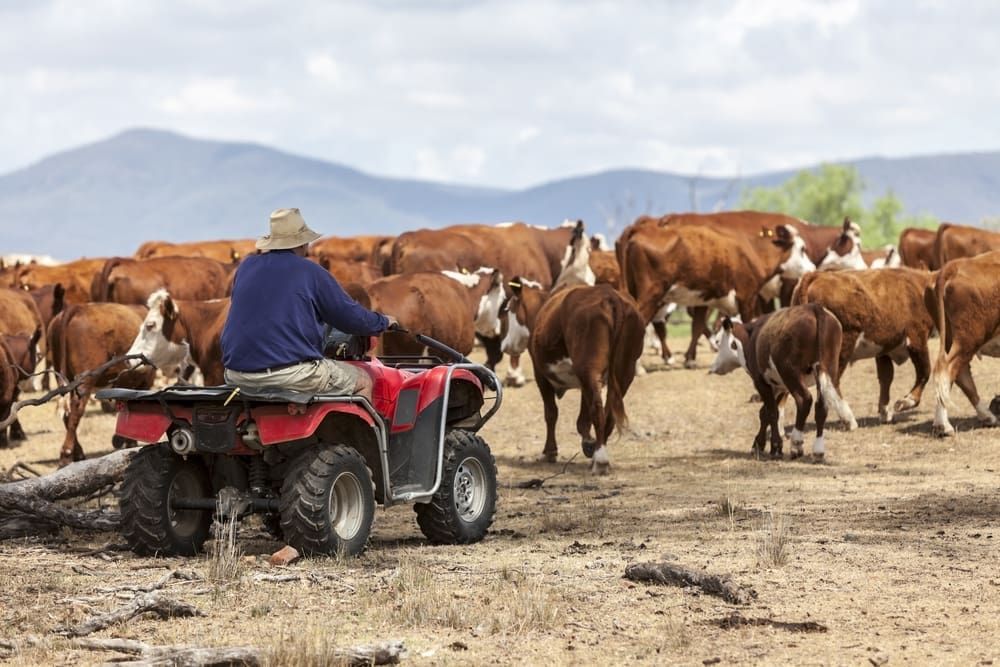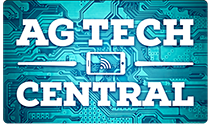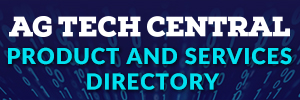
FOR weeks our TV screens and newspapers have been flooded with images of starving animals, parched paddocks and devastated farmers, resulting in a heartbreaking and catastrophic depiction of Australian agriculture.
While all the publicity has assisted in raising some funds for drought crippled farmers, the reality is, it’s all too little too late, and quite frankly, it’s not the media who ought to be driving the drought conversation- it’s us.
So when exactly is the right time for us to talk about drought and how we can better manage it? It seems no one wants to openly talk about it or listen to it when times are good and grass is plentiful; however that’s precisely when we should start planning for it…. and using agtech alongside management should be at the centre of discussion.
Given the current climate, I’ve been asked a number of times: ‘What technology is out there that can assist with drought?’ And while there is obviously no silver bullet, what technology can do is help you better manage the basics in the good times, therefore lessening the impact of the bad times.
Sounds simple, but it’s often the basics that are overlooked or clouded with opinions, bias or nostalgia. Tech and data cuts through that.
Stocking decision-making
As an example, MaiaGrazing is an online grazing management tool with a personalised dashboard that allows users to record key data on their property to generate paddock, stock, and rainfall analytics including current and forecasted carrying capacity.
Quite simply, it enables users to match carrying capacity to stocking rate. With visual representations of historic rainfall data, seasonal growth and previous paddock data – it provides a good forward view on what feed is on offer.
If the picture it paints isn’t great, managers can use it to trigger critical dates where destocking may be the best financial option. This is almost always early in the dry, before everyone else sends animals to market therefore affecting prices.
Maia (http://maiatechnology.com.au/) also enables users to do scenario-based forecasting. It can predict carrying capacity based on where conditions are now and what may or may not fall from the sky, and there along with growth, enables users to glimpse into the future, so to speak.
A future scenario a user might input might be ‘what if we continue to receive less than 75pc of our average rainfall for the next four months?’ Where does that leave our carrying capacity, which dictates stocking rates, which informs us what we need to get rid of?
The tooling can help users see exactly when they need to start executing their drought plan to avoid a unnecessary financial or mental pressure.
Drought doesn’t happen overnight. You don’t just wake up and look outside and think ‘Holy crap it’s dry, where did all the grass go?!’ Warning signs are clear and some of the tech already available, if used properly, won’t let you hide from it.
Sure, sensors are great and are an affordable tool to help map soil moisture and use water efficiently, but rainfall data tells you there’s problems before soil moisture depletes, and while no agtech invention can prevent drought, it does enable you to formulate a clear plan and strategy long before the grass dries up and journalists and photographers come knocking.
There’s simply no excuse for not preparing when we have more access to data and tools than ever.
In the end, farm business managers who use data to make decisions will outlive the rest and that will be bolstered by good agtech integration in the good times to manage the bad.
If you’re still unsold, when did Noah start building the ark? Before the rain.
About Sam Trethewey
 Sam Trethewey is from a farming family and has worked across Australia and overseas on most major commodities including beef, wool, lamb and cropping. He co-founded SproutX, Australia’s first and largest agtech accelerator and investment fund where he spent nearly three years developing an ecosystem of support for agtech startups. He has been a regular commentator on agriculture through print, radio and online and has recently started his own food production company whilst also working as Head of Brand for Redhanded, a rural and regional communications specialist.
Sam Trethewey is from a farming family and has worked across Australia and overseas on most major commodities including beef, wool, lamb and cropping. He co-founded SproutX, Australia’s first and largest agtech accelerator and investment fund where he spent nearly three years developing an ecosystem of support for agtech startups. He has been a regular commentator on agriculture through print, radio and online and has recently started his own food production company whilst also working as Head of Brand for Redhanded, a rural and regional communications specialist.
Questions? If you’ve got an agtech topic you’d like Sam to tackle, please email [email protected]


This is very true. I’m happy someone has said something about this. In fact if you are using this technology times like this can be more of an opportunity than a problem. Businesses never fail only management.